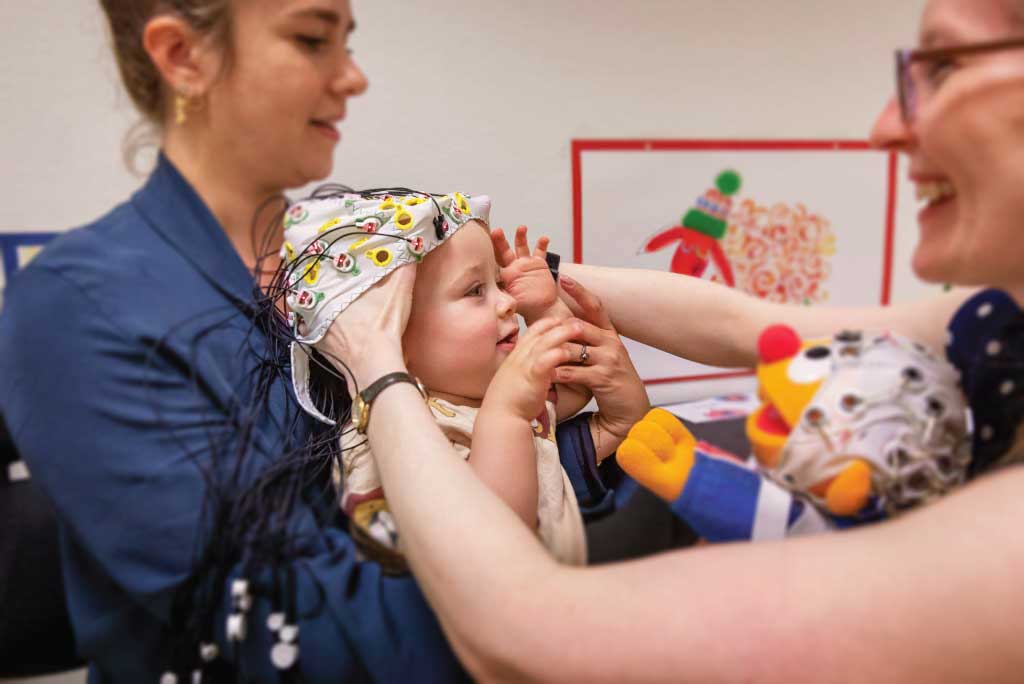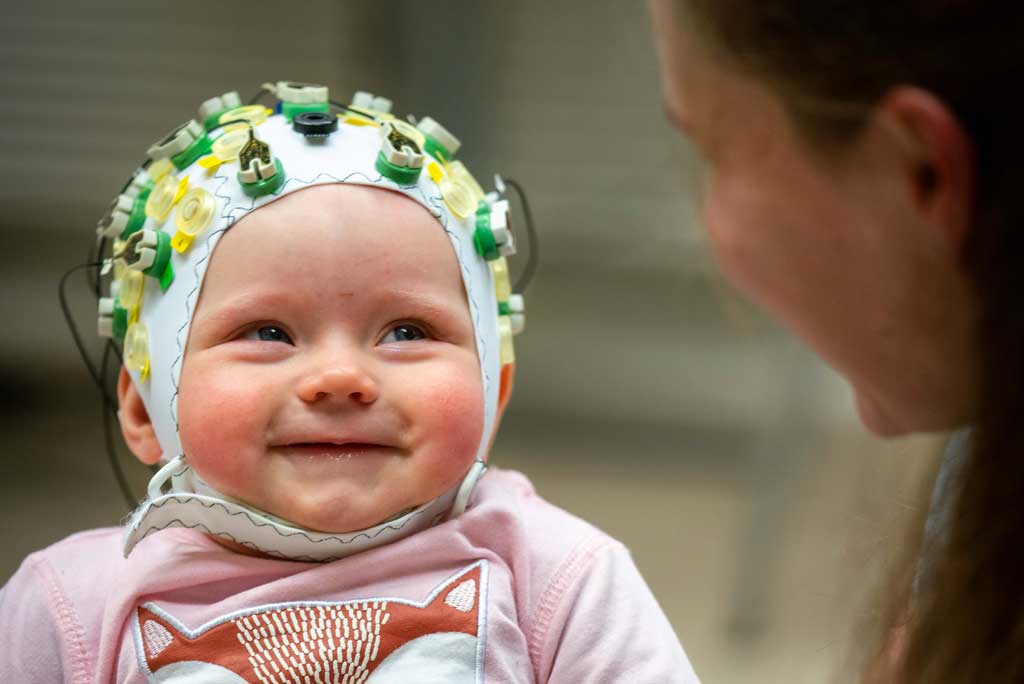Why measure brain activity?
Because very young children are not yet able to tell us how they perceive other people or what it’s like to listen to speech, we measure their brain activity. When babies look, for example, at a picture or listen to language or even when they are just observing other people around them, particular patterns can be observed in the brain. By studying these patterns we gain more insight in early developmental processes.
Measuring brain activity (using EEG or fNIRS) is a safe procedure used in research centres all over the world to study children's development.


High-tech caps
One of the procedures we use in our research is the measurement of brain activity using fNIRS (functional Near InfraRed Spectroscopy). For this we use a special kind of high-tech cap with sensors that can measure the oxygenation of the various regions of the brain. The cap itself is made of stretchy material and has sensors clipped into it. The sensors emit light and measure how much light is reflected back by the various areas of the brain. The amount of light that is reflected depends on the oxygenation level of that region of the brain and can therefore tell us something about which areas of the baby’s brain are activated.
Another method we use for measuring brain activity is EEG (electroencephalogram). For this we use a sort of high-tech swimming cap, which can pick up the small electrical waves that are produced by the baby’s brain.
Read more?
Measuring a baby's brain activity is quite the struggle! Read more about this in the university magazine Vox (in Dutch).